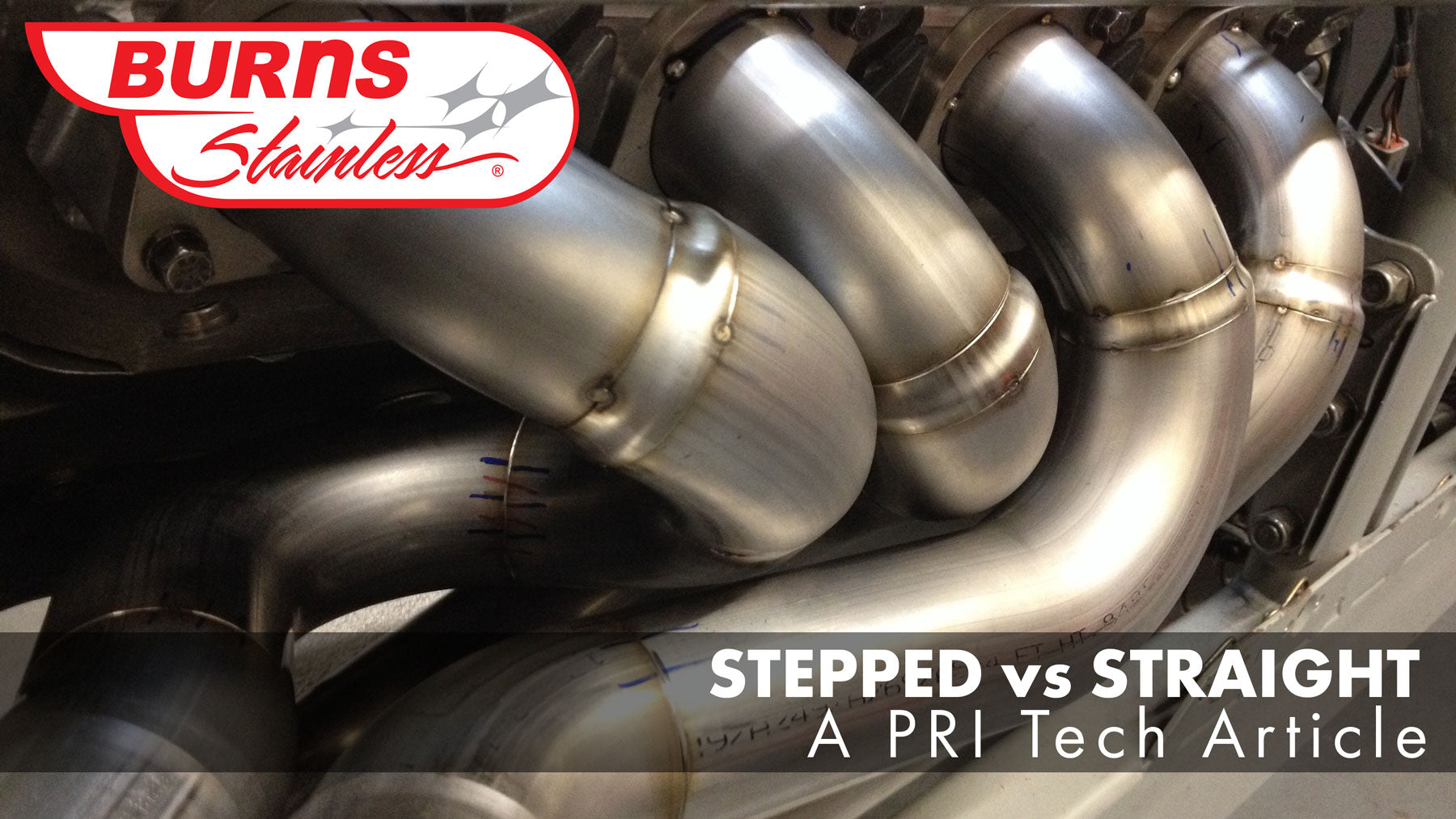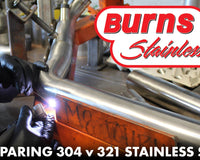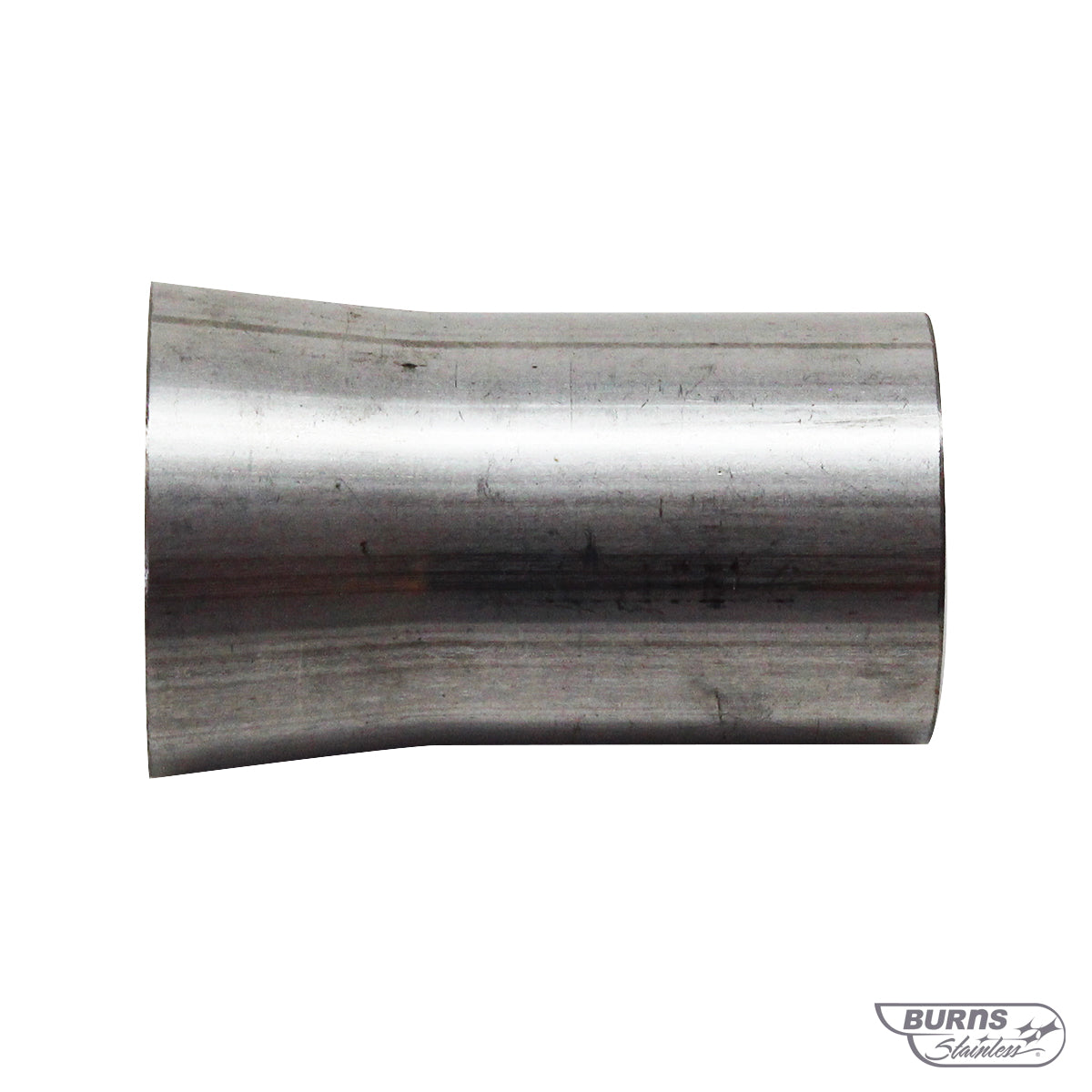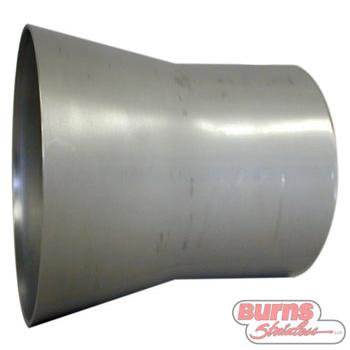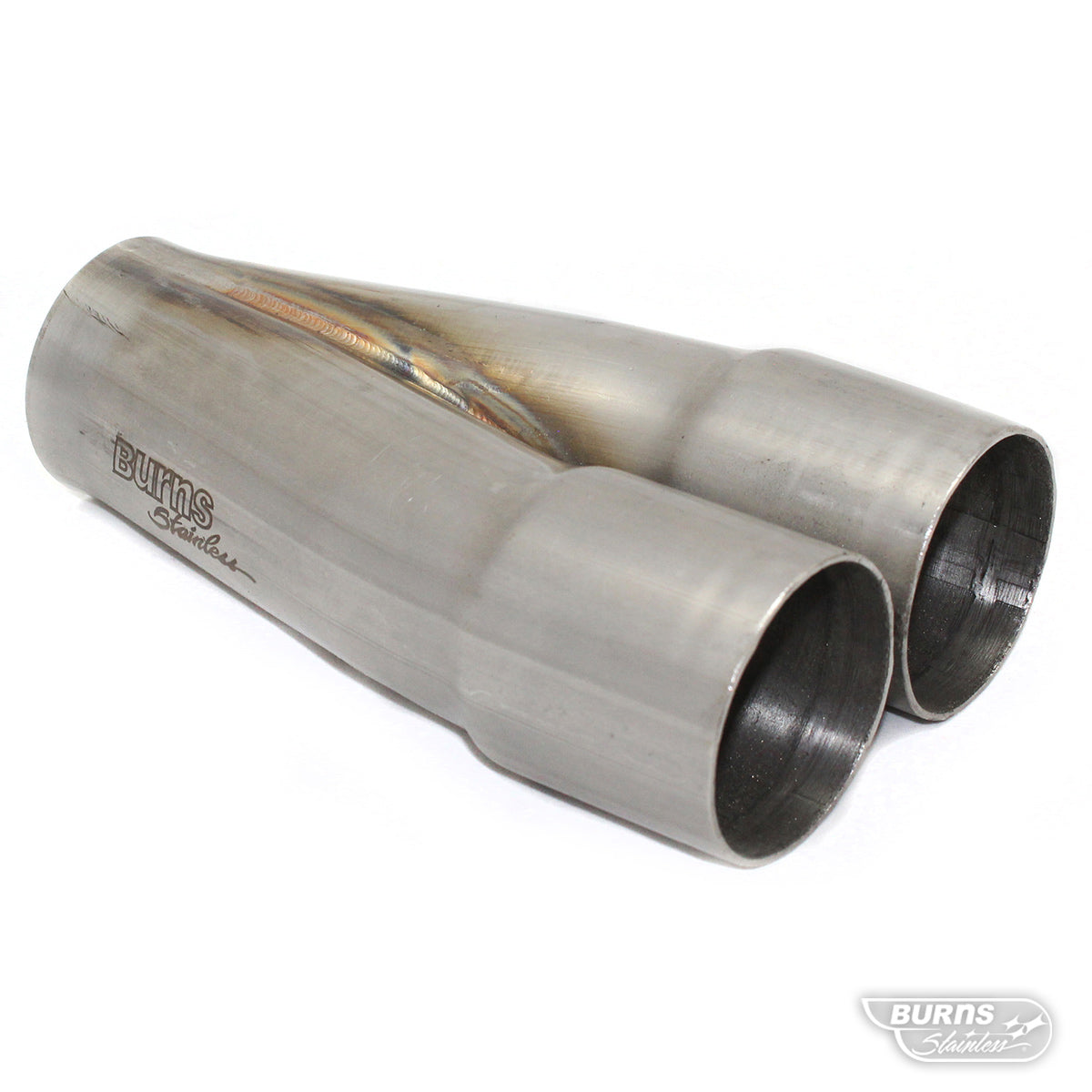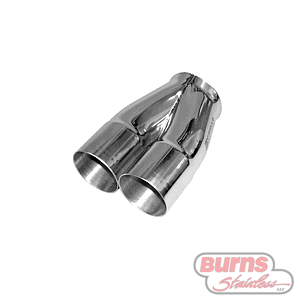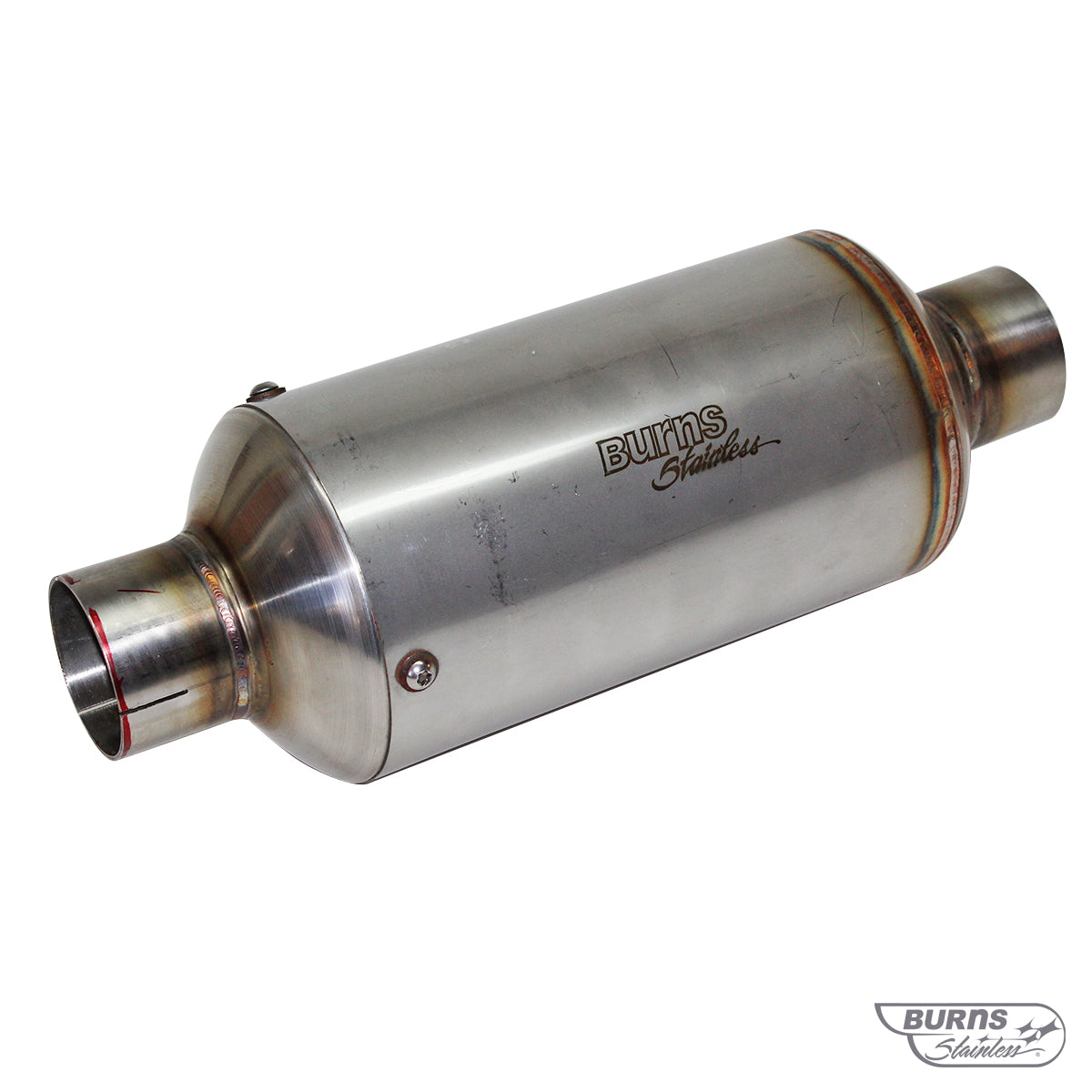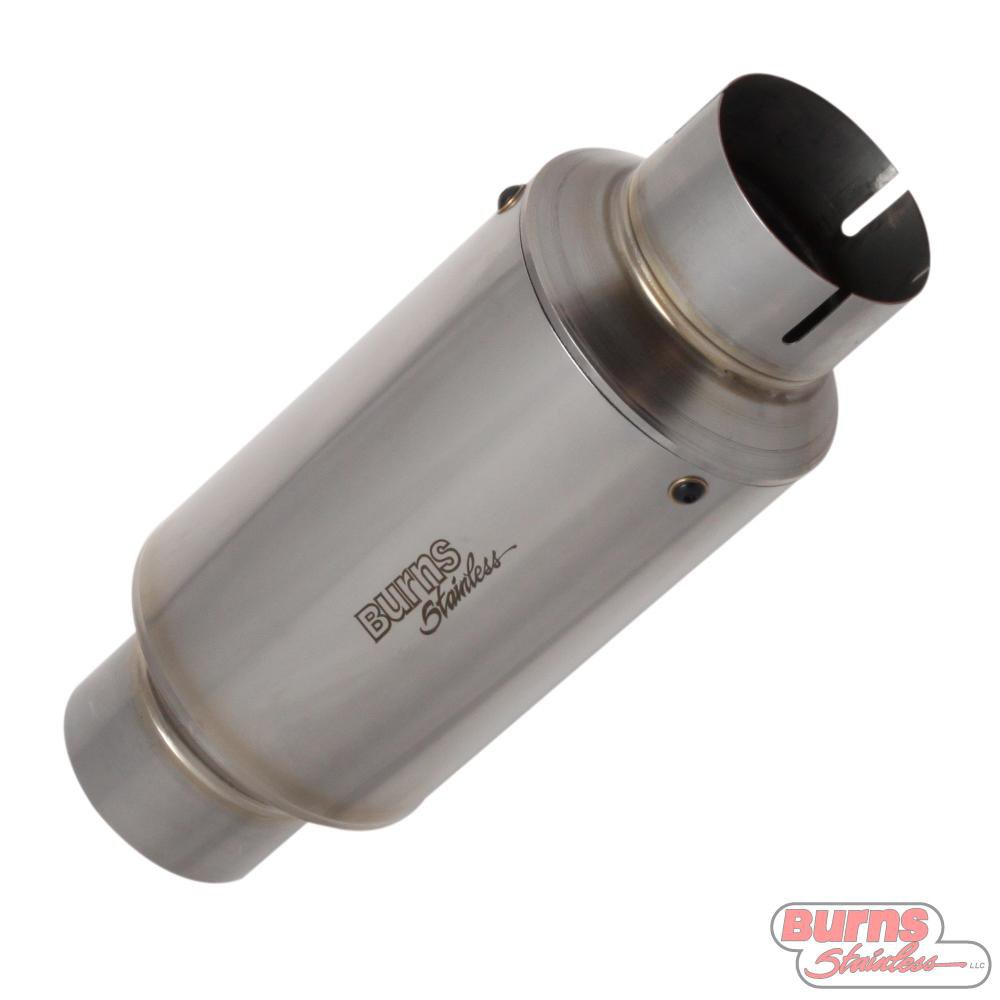Recently the Performance Racing Institute (PRI) asked Burns Stainless CEO/President Vince Roman to offer up some tech on the differences between a stepped exhaust design and straight pipes.
Here are some of the highlights (visit PRI's tech section for the entire article):
How do you get maximum performance out of your exhaust header?
For starters, an effective exhaust system optimizes the movement of the pressure waves occurring within it. Pressure wave management helps maximize “mass-flow.” Mass-flow is the process of moving the largest amount of exhaust gas out of the header as efficiently as possible. Performance header design focuses on optimizing mass-flow.
To explain how stepped design improves flow and power range, let’s review what happens in the header. As the exhaust valve opens following the power stroke, a pressure wave and a mass of exhaust gas flows from the cylinder into the header primary.
Creating broader Power Bands:
The stepped design also creates multiple wave reflection points. These smaller vacuum waves help evacuate exhaust from the cylinder at different engine speeds. This results in improved torque across the power band.
Bigger isn't always better:
There are many benefits to a stepped exhaust header. One practical benefit is that the exhaust tube is smaller at the cylinder head. This is often easier to package in a full chassis car. It’s the reason racers likely developed this design in the first place. Yet, the most important benefit is its performance improvement over straight-tube designs.
Cost and applications considerations:
Stepped-header tubes are also more difficult and more expensive to fabricate than straight-tubed headers. So, if you do not need to extract all the power available, then a straight-tube header is going to get the job done.
Get all the details in the extensive article on PRI Tech.
CLICK HERE TO READ MORE.
Want to build your own headers? We have all you need. Start with the Merge Collector and build it from there with our Tubing and Bends.

